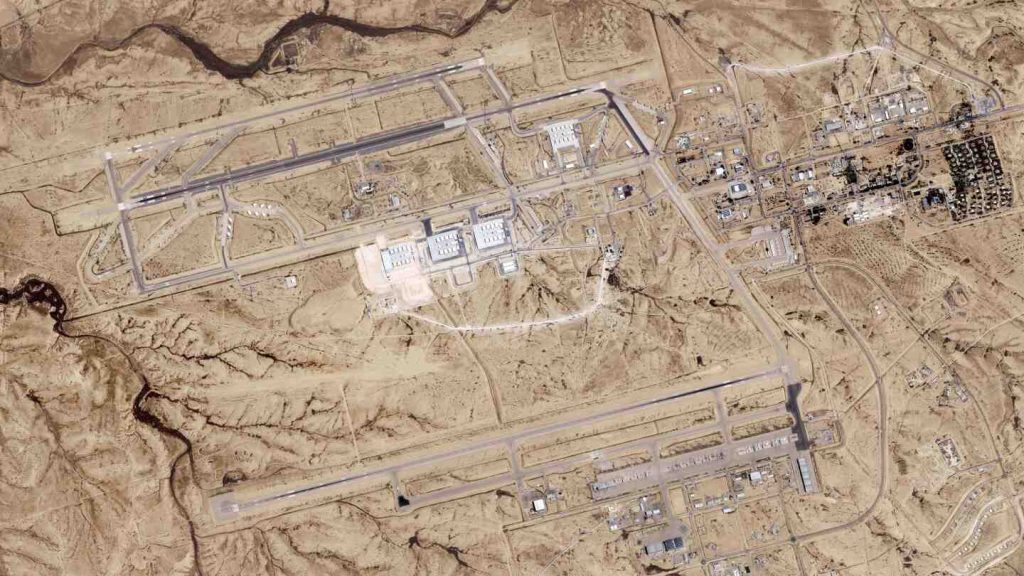On April 13, Iran launched an unprecedented assault on Israel, targeting the Nevatim air base in the country’s desert. The attack included hundreds of drones, ballistic missiles, and cruise missiles. However, the damage caused was relatively minor, with Israeli air defenses, supported by the US, the UK, and Jordan, successfully intercepting the majority of the incoming fire. This attack highlighted Iran’s willingness to use its arsenal against Israel, marking the first direct military assault on the country by a foreign nation since the 1991 Gulf War when Saddam Hussein launched Scud missiles at Israel.
An analysis of satellite images by The Associated Press showed damage to a taxiway near hangars at the Nevatim air base. The damage was minimal, with fresh blacktop visible on the taxiway. The Israeli military had released footage showing construction equipment working on the damaged taxiway, confirming the impact of the Iranian attack. The presence of C-130 cargo aircraft in nearby hangars indicated the potential targets of the assault. Despite Iran’s attempt to portray the attack as a victory, the limited visible damage contradicts their narrative, revealing more about their capabilities to reach Israel than the actual impact on the ground.
Iranian President Ebrahim Raisi hailed the attack as a demonstration of the power of the Islamic Republic and its armed forces. The assault was seen as a show of strength and determination, showcasing Iran’s ability to strike Israel directly. The attack came amid heightened tensions in the region, particularly due to the Israel-Hamas war in Gaza. However, recent developments suggest both Iran and Israel may be looking to de-escalate the situation. An Israeli retaliatory attack on Isfahan was met with a low-key response from Tehran, indicating a desire to avoid an escalation of hostilities.
The satellite images and Israeli military footage provide a glimpse into the aftermath of the Iranian attack on Nevatim air base. The images show a repaired taxiway and minimal damage visible in the area. The juxtaposition of Iran’s efforts to depict the attack as a significant victory with the actual limited impact on the ground raises questions about the effectiveness of such military actions. As both countries navigate a delicate balance of power and regional dynamics, the risks of a wider conflagration remain. The recent events highlight the complex nature of the long-running shadow war between Iran and Israel, with both sides seeking to assert their influence while avoiding a full-scale conflict.


